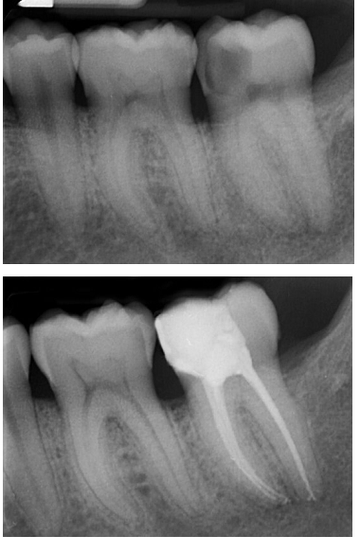 August 29, 2018
August 29, 2018
sk a dentist what they would do and more often than not they will say keep it! Some teeth are too far gone however and removing them is the best option. So what do you need to know about this very important choice?
Save it: Root Canal Therapy – Key points
Advantages:
The tooth has an extended life span.
Minimal trauma to the area as the tooth is not being extracted.
Other teeth will keep their place, allowing normal chewing to continue.
The procedure can often be completed in one to three visits.
Disadvantages:
This procedure costs more than an extraction. A crown is often advised which is an additional expense. Crowns can be deferred to a later date, however.
A long appointment of 90 minutes is usually required. Plenty of anaesthetic is used.
Not all treatments are successful. The aim being to keep the tooth for longer, not necessarily forever. Ask your dentist for the estimated success rates. A failed root canal treatment may be referred then onto a specialist at an additional fee, or the tooth may be extracted.
The tooth may feel different to the other teeth, or it may not. (ie different sensation
The tooth may discolour or turn dark. This can be corrected with a crown.
If root canal therapy is chosen, there is no need to consider tooth replacement options. However a crown is usually advised.
Lose it: Extraction – Key points
Advantages:
Quick relief of intense toothache.
The tooth is gone for good.
Most cost effective way for immediate pain relief.
Disadvantages:
Permanent loss of the tooth.
Sometimes surgery is required for difficult roots.
There will be some discomfort or pain during healing (weeks).
There will be less teeth to chew with which will create more load for the remaining teeth.
Chewing may defer to one side of the mouth creating joint stress or pain.
Other teeth may move, creating unfavourable gaps and food trapping, resulting in decay.
If extraction is the choice, there are options on how to fill the gap in the future. This will help prevent drifting, leaving open gaps and food traps.
